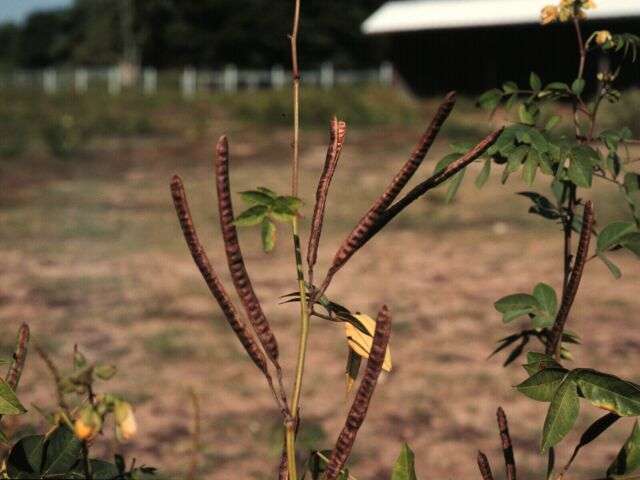Livestock producers urged to watch for toxic plants

Extreme heat and dry conditions can lead to a shortage of grass, and an opportunity to consume toxic plants and forages found in Texas rangelands. Livestock producers should be aware of potential pitfalls, according to a Texas A&M Veterinary Medical Diagnostics Laboratory expert.
Dr. Tam Garland, head of the lab's toxicology section in College Station, advises cattle producers to scout pastures and be on the lookout for four types of senna plants that can be toxic during different seasons and weather patterns: coffee senna, twinleaf senna, sicklepod senna and Lindheimer senna.
Of late, extremely high temperatures without rain have stressed grasses. Livestock try other plants that remain green, Garland said. Coffee senna is maturing and is still green, and Garland said cattle will find these more palatable as the fall season approaches.
"Just like humans, cattle will want variety in their diet and they find the coffee senna beans quite tasty as forages become less available," she said.
The plant will have 6–to 8-inch-long beans that grow upward rather than downward, forming a type of parenthesis around the center stalk of the plant.
Twinleaf senna will become more prevalent with frequent showers. Garland said this perennial plant will grow beside other weeds in the pasture.
"People think when they get rain they've got a lot grass in the pasture, but there are other weeds that can pop up," Garland said. "This is typical of twinleaf senna
that is found growing in Central and West Texas regions where there's limestone soils."
Though herbicides applied to pastures earlier this year can control the threat of toxic forages and weeds, there's still the potential for high winds to blow seeds into these areas.
"It's still important for ranchers to scout pastures and be on the lookout," Garland said. "The biggest problem is we don't notice subtle clinical signs in our livestock, nor do we scout our pastures and look for these potentially toxic plants."
Ranchers should observe their cattle. Those excreting dark urine and having consumed coffee senna, and also twinleaf senna if there has been rain, will have clinical signs such as diarrhea and weakness before they get down.
"And when they get down, they do not get up," Garland said. "That's why it's so important for daily observation of cattle and to scout pastures. These are what we call alert downers. They will eat and drink if food and water is taken to them, but they cannot get up."
For more information about these and other toxic plants, Garland has co-authored Toxic Plants of Texas, available at the AgriLife Bookstore: www.agrilifebookstore.org/Toxi … f-Texas-p/b-6105.htm .
Additionally, the lab can determine if livestock have ingested one of these potentially deadly plants. For more information on testing, visit tvmdl.tamu.edu/tests/microscopic-analysis .
Provided by Texas A&M University

















